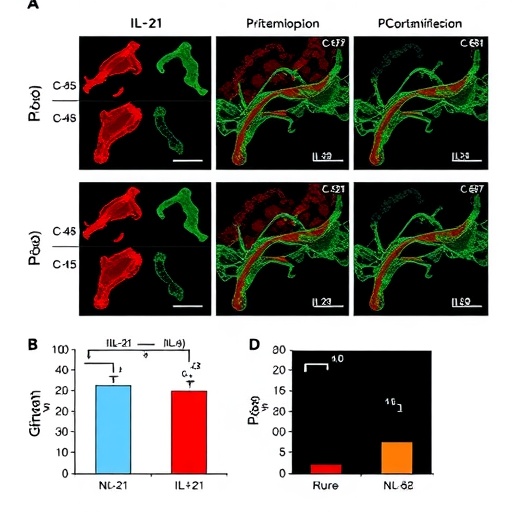A team of biologists has uncovered a mechanism that determines faithful inheritance of short chromosomes during the reproductive process. The discovery, reported in the journal Nature Communications, elucidates a key aspect of inheritance–deviation from which can lead to infertility, miscarriages, or birth defects such as Down syndrome.
The research centers on how short chromosomes can secure a genetic exchange. Genetic exchanges are critical for chromosome inheritance, but are in limited supply.
How short chromosomes ensure a genetic exchange is of great interest to scientists given the vulnerability of short chromosomes.
“Short chromosomes are at a higher risk for errors that can lead to genetic afflictions because of their innate short lengths and therefore have less material for genetic exchange,” explains Viji Subramanian, a post-doctoral researcher at New York University and the paper’s lead author. “However, these chromosomes acquire extra help to create a high density of genetic exchanges–but it hadn’t been understood as to how short chromosomes received this assistance.”
To explore this question, the researchers, who also included Andreas Hochwagen, an associate professor in NYU’s Department of Biology, studied this process in yeast–a model organism that shares many fundamental processes of chromosome inheritance with humans.
Overall, they found that vast regions near the ends of both short and long chromosomes are inherently primed for a high density of genetic exchanges–the scientists labeled these end-adjacent regions (EARs). Of particular note, a high density of genetic exchanges in EARs is conserved in several organisms, including birds and humans.
Significantly, the researchers noted that EARs are of similar size on all chromosomes. This means that EARs only occupy a limited fraction of long chromosomes but almost the entirety of short chromosomes. This difference drives up the density of genetic exchanges, specifically on short chromosomes, and does so without cells having to directly measure chromosome lengths.
###
The paper’s other authors included Tovah Markowitz, an NYU doctoral student at the time of the research, and Luis Vale-Silva, an NYU post-doctoral researcher at the time of the study, as well as Xuan Zhu and Scott Keeney of Memorial Sloan Kettering Cancer Center, Nancy Hollingsworth of Stony Brook University, and Pedro San-Segundo of the University of Salamanca.
This research was supported by grants from the National Institutes of Health (R01 GM111715, R35 GM118092, R01 GM050717, and P30 CA008748)
Media Contact
James Devitt
[email protected]




